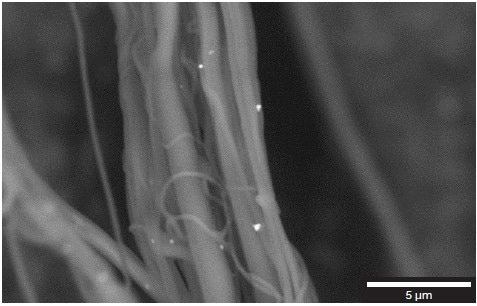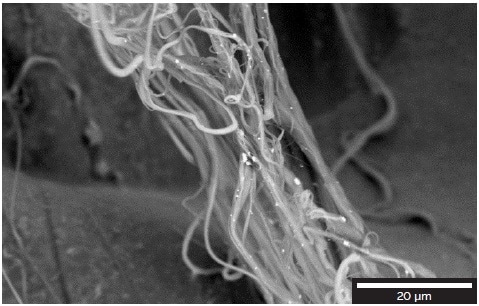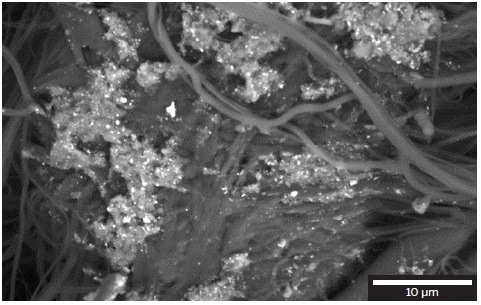Polymer nanofibrous membranes are commonly used in smart textiles and clothing, liquid or water filtration, chemical processes, air filtration and additionally within biomedical applications like biomedicine carriers.
Within specialized applications, fibers may be treated with antibacterial materials in order to provide additional benefits.
Nanosilver Particles
Nanosilver particles have recently been proven to possess antifungal, antibacterial, anti-inflammatory and antiviral properties. This has made them especially suitable for improving fibers used within polymer nanofibrous membranes.
The most common challenges during this production process include effectively controlling the distribution of silver particles on the surface of a fiber, as well as controlling the agglomeration of the silver particles themselves.
Scanning Electron Microscope: TESCAN VEGA3
Scanning electron microscopy (SEM) offers one such solution to this control issue as the backscattered electron detection is ‘material sensitive’. Materials with a higher atomic number will appear brighter when compared to those with a lower atomic number, meaning that in practice, silver particles will appear brighter than fibers.
In the SEM observation presented below, it is possible to see single particles of silver and their distribution on the surface of the fibers.
This is especially important to note, where information on size and agglomeration of silver particles can be effectively assessed, production processes can be refined accordingly and therefore improved.
These observations were performed with the TESCAN VEGA3 SEM on a sample provided by Pardam Nanotechnology Company. These SEM images were acquired at 10 kV with the BSE detector.

Figure 1. Silver nanoparticles distribution on the surface of the polyamide nanofibers

Figure 2. Silver nanoparticles distribution on the surface of the polyamide nanofibers

Figure 3. Silver nanoparticles distribution on the surface of the polyamide nanofibers

Figure 4. Silver nanoparticles distribution on the surface of the polyamide nanofibers

Figure 5. Silver nanoparticles agglomeration between the polyamide nanofibers
TESCAN Group
Founded in 1991 by a group of managers and engineers from Tesla with its electron microscopy history starting in the 1950’s, today TESCAN is a globally renowned supplier of Focused Ion Beam workstations, Scanning Electron Microscopes and Optical Microscopes. TESCAN’s innovative solutions and collaborative nature with its customers have won it a leading position in the world of nano- and microtechnology. The company is proud to participate in premier research projects with prominent institutions across a range of scientific fields. TESCAN provides its clients with leading-class products in terms of value, quality and reliability. TESCAN Group is the North American arm of TESCAN Group, a multinational company established by the merger of Czech company TESCAN, a leading global supplier of SEMs and Focused Ion Beam workstations, and the French company ORSAY PHYSICS, a world leader in customized Focused Ion Beam and Electron Beam technology.

This information has been sourced, reviewed and adapted from materials provided by TESCAN Group.
For more information on this source, please visit TESCAN Group.